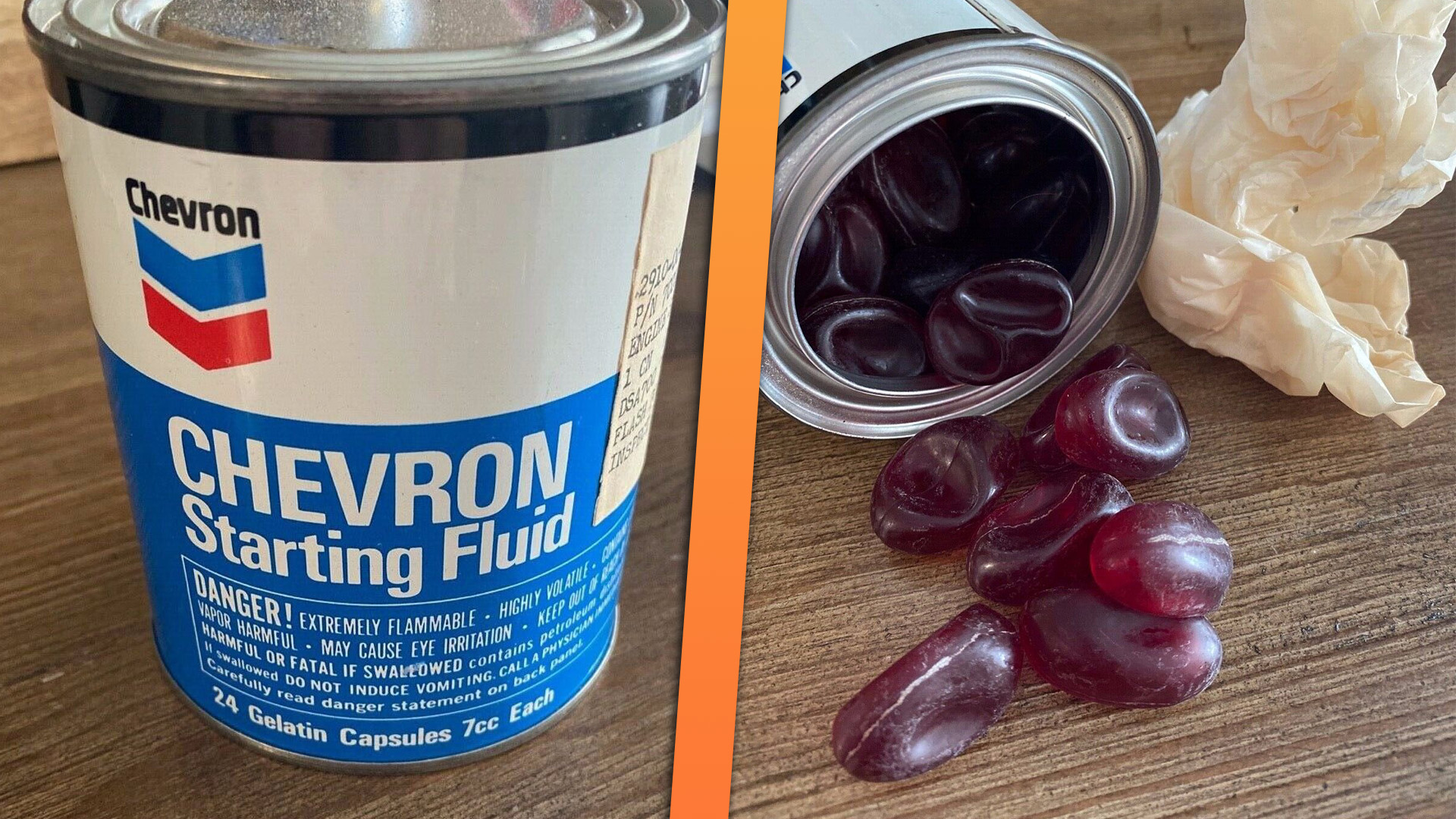

Before Tide Pods, there were ether bombs. Or, as they were officially called, “starting fluid capsules.” These forbidden fruit snack-looking things wouldn’t last a minute on the market today thanks to TikTok, but they were once a mainstay in garages across the United States. You can still find them if you look hard enough, but first, a brief history lesson.
As you can guess, they were filled with starting fluid (or ether) meant to help old diesel engines fire up. They were especially useful for two-stroke Detroit Diesels as they relied on ether in below-freezing weather. No glow plugs meant they needed the extra kick to initiate combustion. Now, these predate me by a while and I’ll admit that I’ve never seen them in action, but from what I’ve devised, they simply fit in a plunger-type canister that fed the fluid into an engine’s intake. Companies like Chevron sold the capsules, which contained about 7cc of ether.

Once the capsule was placed inside the canister, the operator simply slammed the lid shut. It would then deliver a shot of ether in just the right amount so as not to damage the engine’s combustion chambers. Manufacturers were sometimes hesitant to recommend starting fluid because too much could force engine repairs, but in one GMC brochure from 1954 posted online, they were advertised with a part number reading 2233343.
The coating around the capsules looks deceivingly appetizing, but like Tide Pods, you definitely don’t want to pop one with your teeth. Forum threads and Facebook posts recount many a story of people mistaking them for candy as kids, which I believe completely. Common sense has never been that common, but do you really expect a 10-year-old to see one of these and not wonder what it tastes like? Heck, I’m in my 20s and I’m still curious.



They bring back a lot of nostalgia for several generations of gearheads that either used them or saw their dad toss ’em in the truck on a cold morning. Mecum even sold seven cans of ’em at auction in 2020 for the low, low price of $12. That’s surely even cheaper than they were originally when adjusted for inflation.
I wouldn’t count on any of the big oil companies bringing these back any time soon. Instead, we can look back on old times with rose-colored glasses and be happy we don’t need these anymore. Unless you drive a 7.3-liter Power Stroke like me, in which case…maybe you do.
Got a tip or question for the author? Contact them directly: caleb@thedrive.com